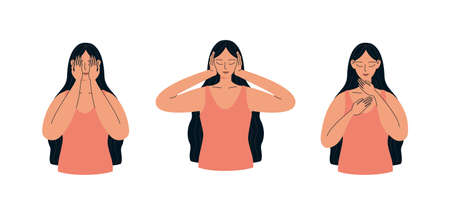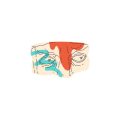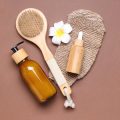Understanding LED Therapy: A British Perspective
In recent years, LED therapy devices have become a standout innovation in the UKs ever-evolving skincare landscape. Known for their non-invasive approach and impressive results, these devices are now a staple on the vanities of beauty enthusiasts across Britain. LED (Light Emitting Diode) therapy works by utilising specific wavelengths of light to target various skin concerns such as ageing, acne, and dullness—issues often exacerbated by the unpredictable British climate.
British consumers, with their unique weather conditions characterised by frequent rain, high humidity, and limited sunshine, are increasingly seeking at-home solutions that can deliver salon-worthy results. As a result, the popularity of LED therapy devices has soared, with both professional clinics and home users embracing the technology for its convenience and efficacy.
LED Therapy Device Trends in the UK
| Trend | Description |
|---|---|
| At-Home Devices | Growing demand for portable and user-friendly gadgets suitable for personal use. |
| Customisable Treatments | Devices offering multiple light settings to address different skin issues. |
| Professional Clinic Services | Expansion of LED facial treatments in aesthetic clinics across major UK cities. |
| Sustainable Skincare Choices | Preference for reusable devices aligning with eco-conscious values prevalent among British consumers. |
The surge in interest is also influenced by British celebrities and skincare experts who advocate for science-backed routines tailored to local environmental stressors. Understanding these UK-specific trends provides a foundation for maximising your results when integrating LED therapy into your daily regimen.
2. Adapting LED Therapy for the British Weather
The UK’s weather is famously unpredictable, with frequent rain, persistent cloud cover, and limited sunshine throughout much of the year. These conditions can have a significant impact on skin health, especially in terms of hydration, brightness, and overall resilience. Unlike sunnier climates, the British environment often leaves skin looking dull and feeling dehydrated due to the lack of natural light and constant exposure to moisture in the air.
How the British Climate Affects Skin
| Weather Element | Skin Impact | Typical Concern |
|---|---|---|
| Rain & Humidity | Compromises skin barrier, promotes congestion | Blemishes, sensitivity |
| Cloudy Skies | Limited Vitamin D synthesis, less natural radiance | Dullness, uneven tone |
| Lack of Sunlight | Reduced collagen stimulation, slower cell turnover | Premature ageing, dryness |
The Role of LED Therapy in Overcoming UK Weather Challenges
LED therapy devices are particularly well-suited for British skin concerns. Blue light helps combat congestion and blemishes commonly triggered by humidity and pollution, while red and near-infrared wavelengths stimulate collagen production and boost cellular repair—crucial benefits when sunlight is scarce. Regular LED sessions counteract the effects of dullness and dehydration by encouraging better circulation and enhanced skin renewal, all from the comfort of your own home, regardless of what’s happening outside.
Expert Insight:
For those living in urban areas like London or Manchester where pollution compounds weather-related skin issues, incorporating LED therapy into your weekly routine provides targeted results that topical products alone may not achieve. It’s a scientifically backed way to restore radiance and resilience despite our famously grey skies.

3. Expert Application: Best Practices for At-Home Use
Integrating LED therapy devices into your daily skincare routine is straightforward, but to achieve optimal results—especially within the unique British climate—it’s important to follow expert recommendations. Below, you’ll find practical advice tailored specifically to UK lifestyles and seasonal variations.
Routine Integration for British Lifestyles
The unpredictability of the British weather, combined with busy work schedules and longer commutes, calls for a flexible approach. Experts recommend the following:
| Time of Day | Recommended Practice |
|---|---|
| Morning | Use LED therapy after cleansing and before applying SPF, particularly in winter when natural light is limited. |
| Evening | Ideal for relaxation; use post-cleansing as part of your wind-down ritual. This also allows for deeper product absorption overnight. |
Tips Tailored for the British Climate
- Humidity & Rain: With frequent rain and humidity, ensure skin is thoroughly dried before using your device. Moist environments can interfere with device efficacy.
- Central Heating Effects: During colder months, indoor heating can dry out skin. Prioritise hydration before and after LED treatments to support skin barrier health.
Seasonal Adjustments
| Season | Expert Tip |
|---|---|
| Winter | Increase session frequency to combat dullness from low sunlight exposure. Pair with Vitamin D-rich products if desired. |
| Summer | Use in the evening to soothe skin post-sun exposure and help reduce redness. |
Quick Professional Reminders:
- Avoid using LED devices on wet skin to ensure maximum safety and effectiveness.
- If you commute by train or spend long hours indoors under artificial lighting, compensate with regular evening sessions to counteract environmental stressors.
By thoughtfully integrating these best practices into your routine, you’ll unlock the full potential of your LED therapy device—rain or shine.
4. Choosing the Right Device for Your Skin Type
When it comes to LED therapy devices, choosing one that suits your unique skin type is crucial for achieving the best results, particularly within the context of the British climate. With its frequent rain, cooler temperatures, and limited sunlight, UK weather often contributes to specific skin challenges such as increased sensitivity, fair complexions prone to redness, and dryness or dullness caused by harsh winds and indoor heating. Understanding these common concerns will help you select a device tailored to your needs.
Understanding British Skin Concerns
| Skin Type/Concern | Typical Characteristics | Recommended LED Wavelength |
|---|---|---|
| Sensitive Skin | Easily irritated, prone to redness and flare-ups, especially in cold or damp conditions | Red Light (630-660nm) – Soothes inflammation and calms irritation |
| Fair/Light Skin | More susceptible to sun damage and pigmentation; may experience uneven tone from lack of sunlight | Near-Infrared Light (830nm) – Supports healing and evens skin tone |
| Weather-Affected/Dry Skin | Tightness, flakiness, and dullness due to wind exposure and central heating | Red & Infrared Combo – Enhances hydration and stimulates cell regeneration |
Device Features to Look For
- Adjustable Intensity: Choose devices that allow you to control intensity levels. This is vital for sensitive or fair skin types that may not tolerate higher settings.
- Multiple Wavelengths: Opt for models offering a range of wavelengths so you can address various concerns as they arise with seasonal changes.
- Gentle Materials: Make sure the device has hypoallergenic surfaces, especially if your skin reacts easily to metals or plastics.
Expert Tip:
If you are unsure about your skin’s tolerance, start with shorter treatment durations on the lowest setting. Gradually increase as your skin adjusts, keeping an eye out for any signs of irritation.
Cultural Consideration
The British preference leans towards understated routines that fit seamlessly into daily life. Select compact, user-friendly devices that don’t disrupt your existing skincare habits but enhance them—perfect for busy mornings or relaxing evenings at home during rainy weather.
5. Enhancing Results: Pairing British Skincare with LED Therapy
To truly maximise the benefits of LED therapy devices in the unpredictable British climate, it’s essential to complement your routine with time-honoured UK skincare products and rituals. Pairing these therapies ensures that skin remains resilient against dampness, wind, and fluctuating temperatures, while also boosting the efficacy of each treatment.
How to Combine LED Therapy with Quintessential British Skincare
Start by selecting skincare staples that are well-suited for the UKs unique environmental conditions. British brands often focus on gentle, nourishing ingredients that protect and restore the skin barrier. Incorporate these products before and after using your LED device for optimal results.
Recommended Routine
| Step | Product Type | Purpose | Expert Tip |
|---|---|---|---|
| Cleansing | Cream or balm cleanser (e.g., Elemis, Liz Earle) | Removes impurities without stripping moisture | Use lukewarm water to avoid shocking the skin in colder weather |
| Pre-LED Preparation | Hydrating mist (e.g., Pixi Rose Tonic) | Preps and soothes the skin for light absorption | Mist lightly for better conductivity during LED sessions |
| LED Therapy Session | Device set to appropriate mode (red/blue light) | Targets specific concerns: anti-ageing or acne control | Follow manufacturer guidelines for exposure time |
| Post-LED Care | Nourishing serum (e.g., Boots No7 Protect & Perfect) | Locks in hydration and enhances post-LED glow | Apply immediately after treatment to maximise absorption |
| Moisturising & Protection | Ceramide-rich moisturiser & SPF (e.g., CeraVe, REN) | Reinforces barrier; protects against urban pollution and UV rays even on cloudy days | Never skip SPF; UVA can penetrate clouds year-round in the UK |
The Role of Ritual: Embracing British Self-Care Traditions
The British approach to skincare is as much about ritual as it is about results. Integrate calming practices such as a warm flannel compress or a soothing facial massage using local oils like rosehip or borage after your LED session. These traditions not only enhance product penetration but also promote relaxation—an essential component of holistic skin health.
Final Tip:
Consistency is key. By combining advanced LED therapy with trusted British skincare rituals and products tailored to the local climate, you’ll create a regimen that delivers visible, long-lasting results all year round.
6. Safety, Efficacy, and British Regulations
When investing in an at-home LED therapy device in the UK, understanding safety protocols, proven efficacy, and the latest local regulations is essential to ensure both optimal results and peace of mind. This section covers the essentials every savvy British consumer should know.
Safety Considerations for At-Home Use
The top priority when using any LED therapy device is safety. While most devices available on the British market are non-invasive and designed for home use, improper usage or substandard products can lead to skin irritation or ineffective results. Always follow manufacturer instructions closely and avoid overexposure—more is not always better. If you have sensitive skin or underlying conditions such as rosacea or eczema, consult a dermatologist before starting treatment.
Key Safety Tips
| Tip | Description |
|---|---|
| Patch Test | Perform a small test on your inner arm before applying to your face. |
| Eye Protection | Always wear protective goggles if recommended by the manufacturer. |
| Device Cleanliness | Sanitise your device after each use to prevent bacterial build-up. |
| Treatment Frequency | Stick to recommended session lengths and frequency—typically 10–20 minutes, 2–3 times per week. |
Efficacy Backed by Science
LED therapy’s effectiveness for skin concerns like acne, fine lines, and pigmentation is well-supported by clinical studies. However, results are gradual and require consistent use. British dermatologists emphasise patience; visible improvement often appears after several weeks of regular application. For those seeking quicker outcomes, combining LED therapy with a robust skincare regimen tailored for the UK climate (think hydration and barrier repair) can enhance efficacy.
The Latest UK Standards & Regulations
The UK has specific standards for cosmetic devices to protect consumers:
- CE Marking: All reputable LED devices must carry the CE mark, indicating conformity with health, safety, and environmental protection standards for products sold within the UK and EU.
- MHRA Guidelines: The Medicines and Healthcare products Regulatory Agency (MHRA) oversees medical device safety. Ensure your chosen brand is registered and compliant.
- User Manuals in English: By law, product instructions must be clear, comprehensive, and provided in English to guarantee correct usage by British consumers.
- After-Sales Support: Opt for brands with accessible customer service based in the UK for troubleshooting or warranty queries.
Checklist: Choosing a Safe & Effective LED Device in Britain
| Feature | Why It Matters |
|---|---|
| CE Certification | Ensures adherence to safety standards required in the UK. |
| Mains Voltage Compatibility | Avoids electrical hazards—UK standard is 230V/50Hz. |
| User Reviews from UK Customers | Gives insight into device performance under British climate conditions. |
| Dermatologist Approval | Adds credibility and reassurance regarding efficacy and safety. |
Navigating the world of at-home LED therapy devices doesn’t need to be daunting. By prioritising certified products, following best practices, and staying informed about regulatory updates, you’ll safely enjoy glowing results that are perfectly suited to life in the UK.


